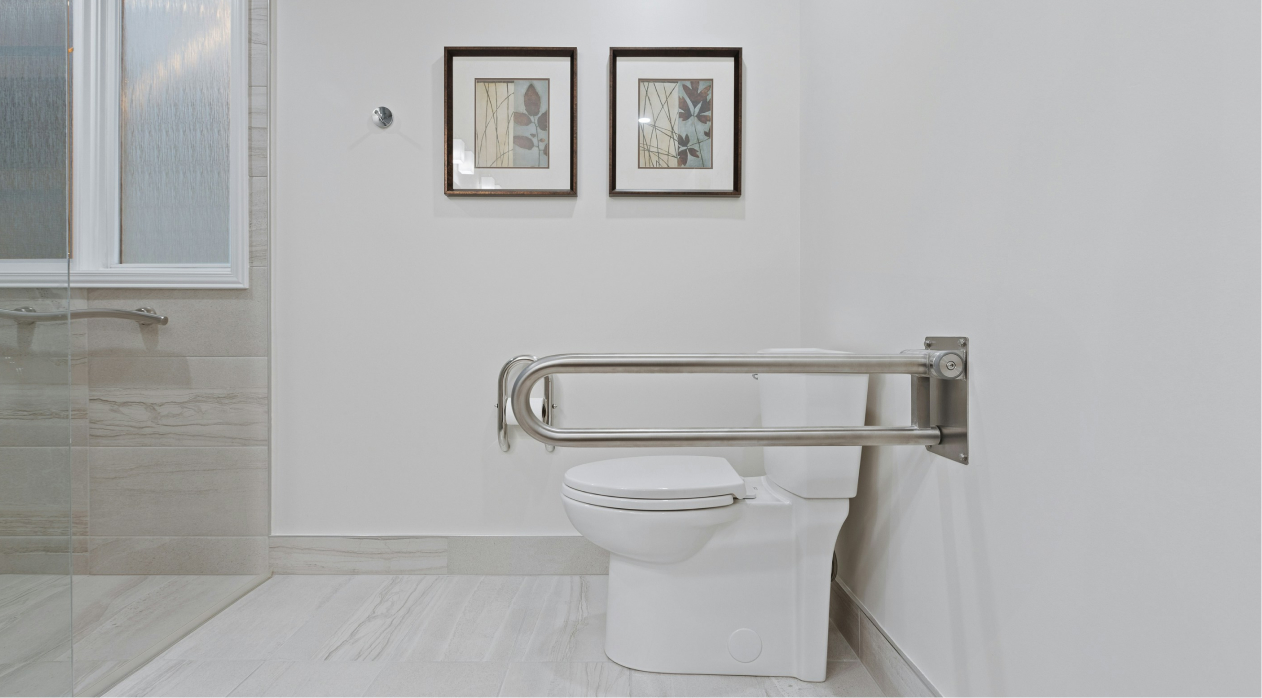
Home Care for Arthritis
Understanding Arthritis Home Care
Arthritis Explained
Arthritis affects nearly four million adults and children in Australia, and research suggests that number could rise to well over five million people by 2030.
Though arthritis has become increasingly common, medical experts still don’t completely understand it. The word “arthritis” is simply an umbrella term for more than 100 medical conditions that impact the musculoskeletal system, with the most common types including osteoarthritis, rheumatoid arthritis, and gout.
Experts believe most forms of arthritis are auto-immune conditions, wherein the body’s immune system attacks itself and produces pain, stiffness, inflammation and swelling—specifically in the joints. That pain can be enough to derail lives and livelihoods: arthritis is the leading cause of chronic pain in Australia, and it’s the second-most common cause of early retirement due to ill health. By 2030, research suggests welfare costs and lost tax revenue due to arthritis-related early retirement will be roughly $1.5 billion.
And contrary to popular belief, arthritis isn’t an adult-only affliction. About 6,000 children in Australia grapple with juvenile idiopathic arthritis (JIA), making it as common as Type 1 diabetes in children under 16 years of age according to Arthritis Australia. All told, arthritis and musculoskeletal conditions add up to 13% of Australia’s total disease burden.
Recognising the Signs
There is no cure for most forms of arthritis, but the good news is modern medicine makes many of them treatable. Early diagnosis is important since it can help control symptoms while preventing further joint damage.

What are the symptoms of arthritis?
Arthritis can affect the neck, shoulders, wrists, hands, back, hips, knees, ankles and feet. Symptoms might include pain, stiffness, reduced mobility, swelling, and even redness or warmth at the site; the rest of the body might show signs of arthritis in the form of fatigue, unexpected weight loss, and a general ‘unwell’ feeling.
However, not all muscular and joint pain is arthritis pain.
That’s why a professional diagnosis is important: pain that begins with no clear reason and lasts for several days probably warrants a trip to the doctor. Arthritis affects people in many different ways—an official arthritis diagnosis allows medical professionals to tailor treatment plans so they are effective for the person and the specific type of arthritis (such as rheumatoid arthritis or osteoarthritis) if that’s ultimately the source of discomfort.
Home care for arthritis often requires lots of adjustments.
Chat with our team to learn how we can help.
Tailored Home Care Plans for Arthritis
Natural Remedies: Lifestyle and Dietary Guidance
Lifestyle choices can play a critical role for people with arthritis. For instance, an active lifestyle can keep muscles and joints strong, and a healthy, well-balanced diet can maintain overall health and wellness.

Exercise for Arthritis Home Care
According to Arthritis Australia, exercise is one of the most effective ways to manage arthritis.
Healthcare experts recommend adults do at least 30 minutes of physical activity most days, either continuously or broken into smaller sessions. Some people enjoy working on their flexibility and range of motion with stretching and yoga, while others opt for muscle training by lifting weights and using resistance bands. Medical professionals—general practitioners, physical therapists and exercise physiologists—can help people with arthritis map out exercise programs that work best for them.
If arthritis pain is a factor, low-impact activities that put less weight on the joints are often good alternatives. Some examples include:
- Walking
- Water aerobics and hydrotherapy
- Pilates
- Tai Chi
- Elliptical training machines
- Dancing
- Cycling
- Everyday activities such as playing with pets, gardening, mowing the lawn and raking leaves also count!
The specific activity isn’t always the most important detail, as long as it involves comfortable movement and is enjoyable and convenient. To that end, people with arthritis should listen closely to their bodies: if a certain exercise causes excess pain or a flare-up, it’s time to take a break and try something else.
Diet for Arthritis Home Care
Maintaining a healthy weight is another important factor in managing arthritis.

Extra weight can increase stress on the joints (especially the hips, knees and lower back), and obviously, painful joints make it difficult to move around.
So what should people with arthritis focus on eating—and not eating?
According to research, dietary fats play a key role in arthritis management. Saturated fats from red meats and full-fat dairy products are best avoided. That’s because they raise levels of LDL cholesterol, which studies have linked to cartilage damage in people with osteoarthritis.
Monounsaturated fats, though, are fair game and an important part of a healthy diet. They can be found in vegetable oils, avocados, nuts and seeds. Omega-3 fatty acids are also helpful in managing arthritis: they can actually help reduce inflammation (especially rheumatoid arthritis) and are easily found in fish such as salmon and sardines, as well as in walnuts, flaxseed and canola oil.
Mental and Emotional Wellbeing
Mental and emotional well-being might be easy to overlook, but when it comes to natural remedies for arthritis, it’s just as important in the equation as diet and exercise.
An arthritis diagnosis often comes with more than just physical pain—it can also cause fear, anxiety, sadness, frustration, depression and even anger. And all of that is perfectly natural. Chronic diseases like arthritis that have no cure can stir up waves of different emotions inside the people they affect, especially when they include other difficult symptoms such as fatigue and disturbed sleep.
People with arthritis must acknowledge those feelings, ask for support if necessary, and resist the urge to isolate. An interesting fact from Arthritis Australia states that 20% of people living alone have arthritis, compared to just 7.3% of people living in family or group households. It’s no secret that feeling supported is critical to overall health; people with arthritis should lean on their communities, but they might also benefit from professional assistance.
Talk therapy, for example, can be an excellent way to sort through emotions and shift thought patterns into a healthier place.
Many types of psychological treatments are available today, and people with arthritis can discuss which approach might be best for them with their rheumatologist and the specialists managing their arthritis treatments. They can also utilise online mental health resources, such as Beyond Blue, to get started.
Professional Pain Management Support
Physical pain can be one of the most difficult aspects of arthritis.
What causes arthritis pain to be so intense?
Inflammation and damage to tissues are often at the root of pain, leading to swelling in the joints. Nerve pain and hypersensitivity of the body’s pain system can also play a role.
There are some excellent online resources available regarding pain management, including this A-Z guide from Musculoskeletal Australia and a Taking Control of Your Pain booklet from Arthritis Australia.
Ultimately, people living with different types of arthritis may be limited in some capacity, and they might have to change the way they do certain activities—but they don’t have to let pain control their lives.
Is your home optimised for safe and effective arthritis care?
Our team conducts home assessments.
Medications and Over-the-Counter Solutions
Many types of medicines and NSAIDS (such as ibuprofen) can help manage arthritis pain, but they’re rarely the entire solution on their own. They can come with side effects, not to mention the risk of addiction, and they need to be utilised sensibly.
Doctors and pharmacists can help people with arthritis find medications that work best for them. They can also recommend gels, creams, patches and other forms of relief that are applied to the skin instead of ingested.

Alternative Pain Relief Support
When it comes to pain relief for arthritis, Arthritis Australia emphasises the necessity of goal setting. The organisation uses the acronym S.M.A.R.T. to help people set goals that are “specific, measurable, achievable, relevant and time-based.”
Goal setting encourages those with arthritis to live the lives they want rather than focusing all of their time and energy on pain management.
Of course, managing arthritis pain might always be part of the routine, and fortunately, there are many alternatives to medications that can provide relief.
In addition to lifestyle changes related to diet, exercise and getting proper rest, people with arthritis can benefit from acupuncture, massage therapy, hot and cold therapies (heating pads and cold packs), and a wide range of relaxation techniques, including breath work, progressive muscle relaxation, and guided meditation.
Home Environment Optimisation
Some everyday activities around the home tend to be a bit trickier with arthritis. If certain tasks cause pain, people with arthritis should make adjustments so that their home environment works for them and not against them. It can be as simple as sliding a heavy object instead of lifting it, or sitting while preparing dinner instead of standing. Minor adjustments like these can add up to reduce pain and strain.

Home Modifications for Arthritis Home Care
Arthritis-related home modifications are different for everyone. Physiotherapists, primary care doctors, and rheumatologists can make the best recommendations for what’s necessary based on specific cases. Some ideas include:
- Bathroom: Slip mats in the bathtub and near the toilet; adjustable transfer bench next to the bathtub; shower seat; grab bars near the bathtub and toilet
- Stairs and Hallway: Secure carpeting (no throw rugs); uncluttered and well-lit pathways; guard rails for outdoor steps; slip mats for indoor steps
- Kitchen: Ergonomically designed kitchen tools such as rocker knives; electric can opener; lightweight pots and pans; easily accessible cookware to prevent bending, stretching and reaching
Assistive Tools and Equipment
There are numerous assistive devices on the market today designed to help people with arthritis perform tasks painlessly. Grabber tools, for instance, help users snag things without reaching or bending over, while bed risers make it easier to climb in and out of bed without pain.
Gadgets aside, people with arthritis can optimise their environment by continually making small, but advantageous adjustments around the home: purchasing pre-sliced fruit, using laundry pods instead of bulky detergent bottles, wearing clothes with velcro and elastic instead of buttons and zippers, enlisting the services of a long-handled shoe horn, and so on.
Speaking of shoes–wearable orthotic devices might also be helpful.
Shoe inserts, splints and braces can relieve pain by shifting weight and easing stress on damaged joints. Medical professionals can recommend the proper orthotics and how to implement them correctly.
Continuous Care and Support
Arthritis is undoubtedly a challenging condition.
Millions of Australians grapple with it daily, and tens of thousands of people who are of working age aren’t able to work at all due to the pain and complications caused by arthritis.

Fortunately, modern medicine and natural remedies combine to offer a wide range of treatment options—people with arthritis today have choices. With a little experimentation, many of them maintain a high quality of life despite their diagnosis.
There is also no shortage of reliable resources providing continuous care and support. Arthritis doesn’t just impact Australia: it’s a global issue, and it’s also the top cause of disability in other countries.
Additional Resources for Arthritis Home Care
General Resources
- 10 Steps for Living Well with Arthritis
- Arthritis Foundation Webinar: Arthritis Hacks for At Home
- Young Adults with Arthritis
- Versus Arthritis
- Information sessions and self-management courses organised by your local Arthritis Office. Sessions focus on skills and changes you can make to reduce arthritis-related challenges. The National InfoLine 1800 011 041 is also available between 9 am-5 pm Monday to Friday. Trained professionals are there to assist in answering your arthritis-related enquiries.
Alternative Treatments
- Complementary Therapies with information about supplements, turmeric, and other home remedies
- Fight Pain without Pills from Arthritis.org with information about topical creams, capsaicin, and other alternatives
Pain Management & Exercise
- Pain Management Network Videos
- My Joint Pain
- Australian Physiotherapy Association
- Exercise and Sports Science Australia
Mental Health
If you still have questions about home care for arthritis or need help, contact The CareSide on our website form or by calling 1300 85 40 80.
We are an approved provider managing Home Care Packages and CHSP services, and we understand how complex care can be. Our team can help you with residential care and home care for arthritis—we’ll answer your questions, explain complicated government language, and provide assistance if you’re searching for personal care, companion care, or anything else.
Registered Affliations


